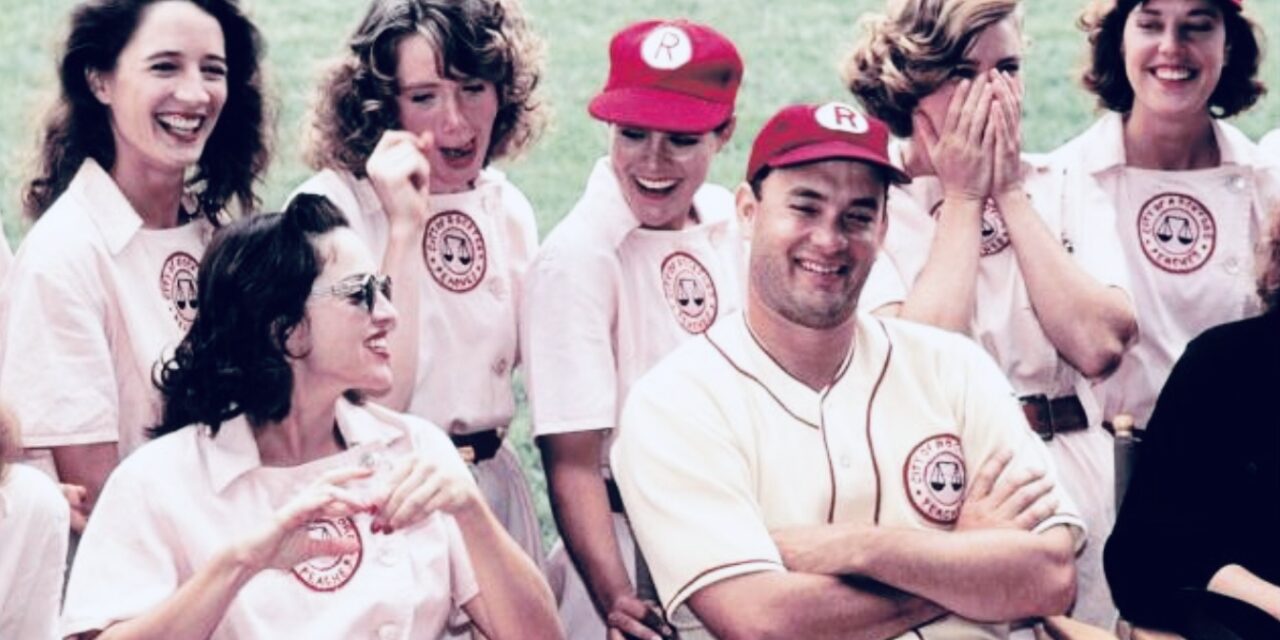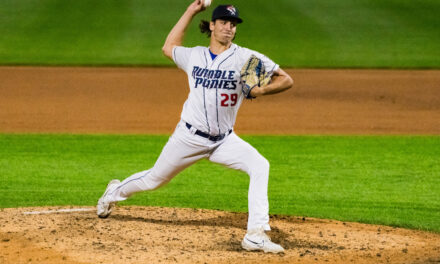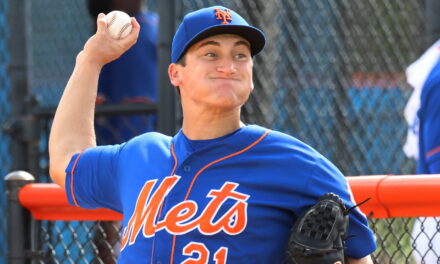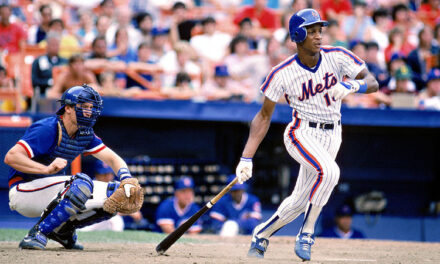
Commerce Collection
This year marks the thirtieth anniversary of the release of the film “A League of Their Own,” the period piece that depicts the real-life All-American Girls Professional Baseball League (AAGPBL) that began in 1943 and ran through 1954.
The league was formed by Chicago Cubs owner Philip K. Wrigley, who wanted to continue promoting the game of baseball despite the number of men that were being drafted into the armed services during World War II, with over 500 major league and more than 2,000 minor league baseball players joining the armed forces, according to American Veterans Center.
“A League of Their Own” focuses primarily on one of the four original teams in the Rockford Peaches, in which sisters Dottie Hinson (played by Academy-Award winner Geena Davis) and Kit Keller (played by Lori Petty) play under former slugger Jimmy Dugan (played by Academy-Award winner Tom Hanks).
While the film’s characters are fictionalized, the portrayal of the era and AAGPBL is authentic. Director Penny Marshall wanted to bring to light a professional women’s baseball league that had seemingly been forgotten over time.
Marshall first learned of the defunct AAGPBL after viewing a PBS documentary in the late eighties that was also called “A League of Their Own.”
Kelly Candaele, whose mother, Helen, would tell her five boys’ stories of her time playing in the league, wanted to bring his mother’s – and so many other women’s – stories to light and found archived footage from basements and garages to include. Candaele and producer Kim Wilson took the footage they compiled and turned it into a 27-minute documentary.
“She (Marshall) saw a documentary,” said Tracy Reiner, who played Betty “Spaghetti” Horn in the 1992 film and is the daughter of the late Marshall. “Someone brought it to her attention and she was like, ‘Wow, that’s real?’”
Initially, the film had a chance of being very different from the one audiences still revere. While Marshall wanted to see the film made, Reiner opines that Marshall didn’t think she could make the film herself.
“It was one of those projects that she loved,” said Reiner. “They started to make it and they only give you a certain amount of time to make things. They were going to make it and then she (Marshall) got in some snit, I can’t remember about what, and wanted to leave that studio. They told her, ‘You have to make it or we’re going to sell it.’”
Marshall took over the reins from the film’s original director, David Anspaugh, who made two beloved sports films “Hoosiers” and “Rudy.” Anspaugh already auditioned and cast many women for the film.
Megan Cavanagh, who played the switch-hitting Marla Hooch, auditioned for both Anspaugh and Marshall.
“Penny Marshall had seen tapes of all the people that auditioned, and I got this phone call saying Penny Marshall was looking for me,” said Cavanagh. “And I was like, ‘Oh, great!’”
Cavanagh was told to prepare to read for several different roles, but ultimately, had her heart set on Marla.
“I prepared for all of that and then I only read for Marla the whole time and everyone else was switching roles. Rosie O’Donnell followed me out after the audition and said, ‘You’re the best Marla we’ve seen so far.’”
She was told she got the part soon after when an operator interrupted her phone call with her best friend, alerting her that she had an emergency phone call from her agency.
Cavanagh had secured her first movie role.
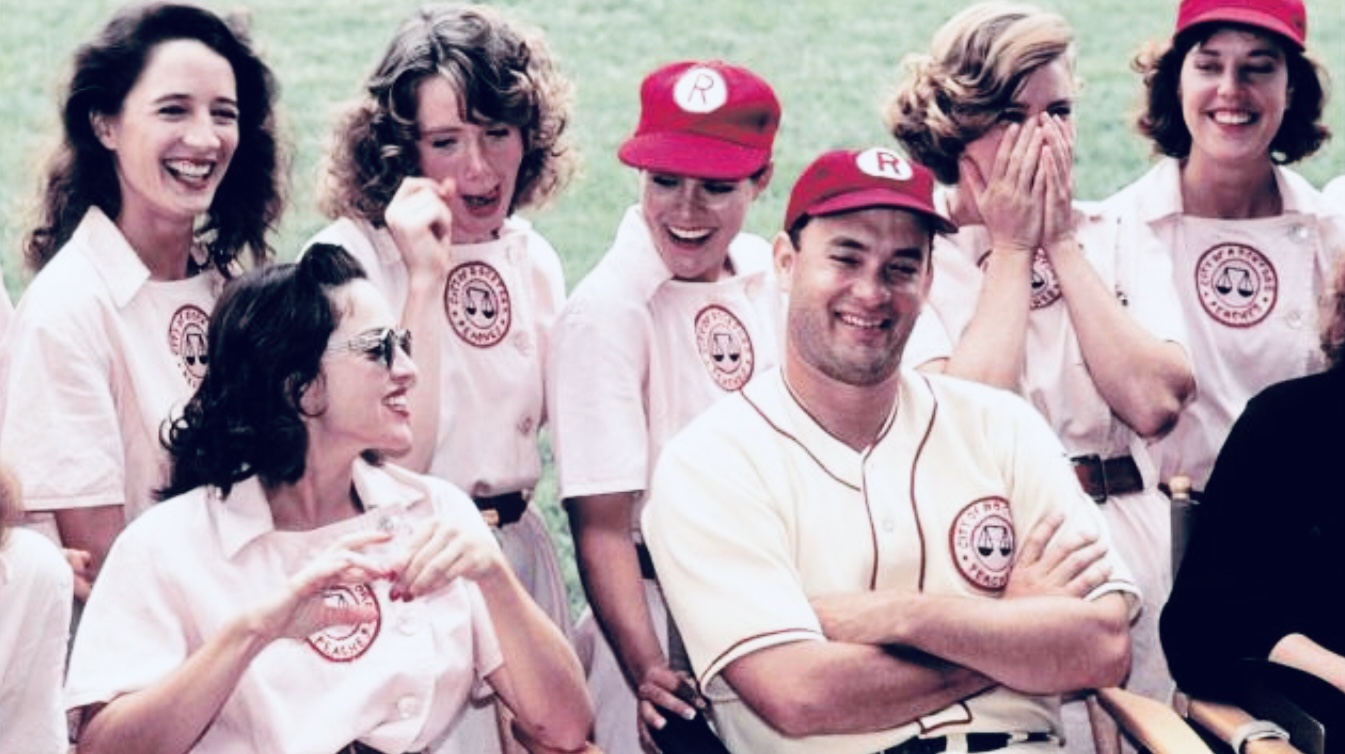
The same went for Ann Cusack, who played the illiterate ballplayer Shirley Baker. For Cusack, “A League of Their Own” changed the course of her career for the better.
While living in Chicago, Cusack auditioned for Marshall and passed the baseball-drill portion, something that all the women in the film needed to do in order to have a shot at securing a role. Once the actors were cast, the pre-shoot baseball training began.
“I got cast late, so I only had about two months of training,” said Cusack. “We were over at U.S.C., and I went through all the drills. We had to go over a lot of drills, a lot of training, and a lot of basic sort of stuff. It was a lot of fun. I loved it.”
Rosie O’Donnell, who portrayed third baseman Doris Murphy, was working as a video jockey at the time when she first got cast in “A League of Their Own” with Anspaugh attached. When Marshall picked the film back up, O’Donnell got a call asking to come back in and read for the film.
The new crew wanted to know if O’Donnell could play baseball, something she was extremely confident about.
“I was in every sport,” said O’Donnell. “I used to go down to the Little League field and girls weren’t allowed to play back when I was a kid. I would stay in the foul area and wait until it was a foul ball and I’d run and dive and catch the ball. The coaches would say, ‘Can we trade in her brothers for that one?’ I was just naturally good at it.”
When O’Donnell went in to read for Marshall, whom she grew up adoring from her hit sitcom “Laverne and Shirley,” there was one thing O’Donnell kept telling herself.
“I kept thinking, don’t call her Laverne, don’t call her Laverne,” said O’Donnell. “I actually started to say, ‘Hi Lav… ugh, Penny.’ She said, ‘You were going to call me Laverne?’ I said, ‘I was, actually.’”
Depending on when the actors were cast meant some had more time than others to train and prepare for the film. For Geena Davis, that meant playing catch up.
“I came on much later than the other gals that you spoke to,” said Davis. “They were training like crazy for a long time. I had to jump in and try to play catch up.”
Davis admits that her athletic background before “A League of Their Own” was mainly nonexistent, but she jumped at the chance to play a strong female character in Dottie Hinson – which Debra Winger was originally slated to play – and was ready to try and convince people that she was the best ballplayer anyone had seen.
“It was kind of amazing, the coaches very early on said, ‘Wow, you have a lot of untapped athletic ability. You’re really picking this up fast!’ It just took me until I was 36 to find that out.”
In fact, “A League of Their Own,” along with a few other athletic roles Davis played after the film, gave her the idea to take up a sport in real life. She threw herself into archery and was a semi-finalist for the 2000 Summer Olympics in Sydney, Australia.
The audition process for both Anspaugh and Marshall featured a bevy of some of the biggest stars during that time, including Demi Moore, Lauren Holly, and Daryl Hannah. Thousands of women tried out in hopes to secure roles for this film, and others, like Patti Pelton, who played second baseman, Marbleann Wilkenson, found a different way in.
“I crashed the audition at one point because my friend told me they were doing this movie and that I should be in it,” said Pelton. “I didn’t have an agent at the time, so I basically jumped in the car with my friends and told them I had an agent. They asked me where I came from and I kind of fibbed.”
According to Reiner, the training regimen was six days a week for three hours a day. It was overseen by USC’s head baseball coach Rod Dedeaux and consisted of doing station work, batting practice, pepper, and infield/outfield drills.
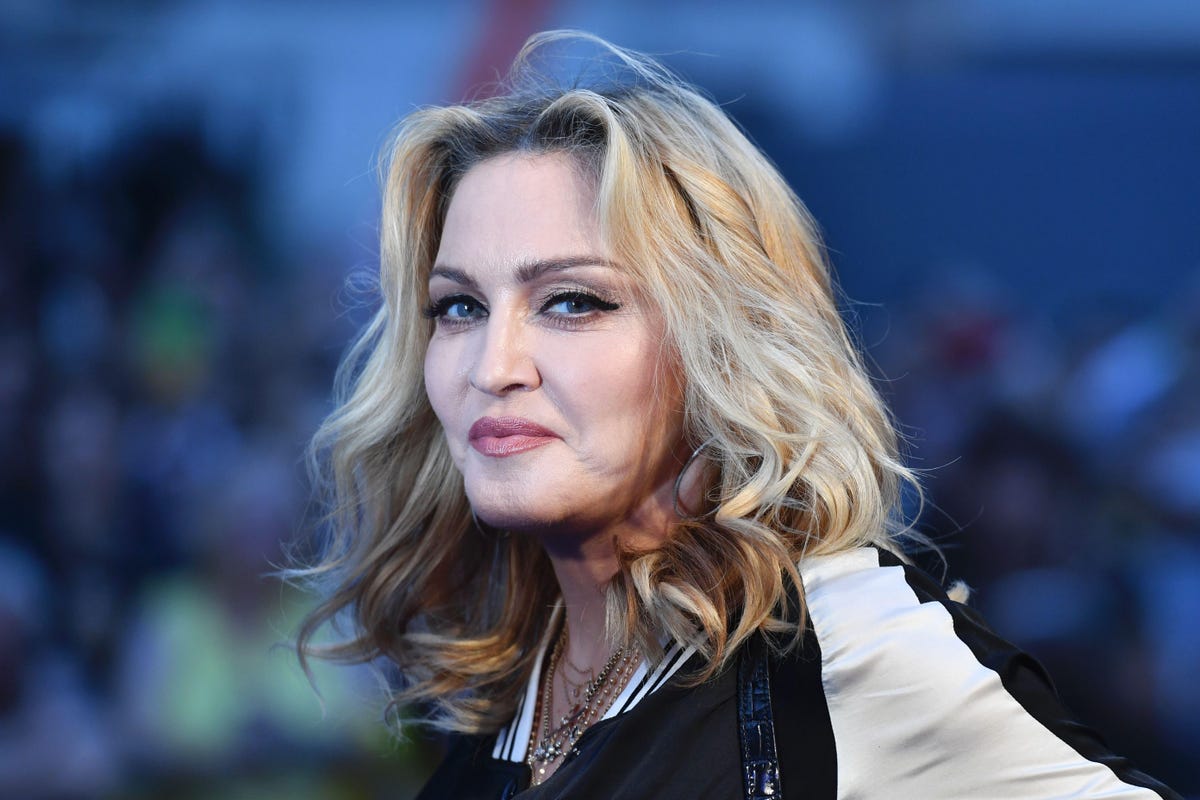
Madonna
While the actors needed to pass the baseball test in order to even be considered for a role in the film, some needed a bit more coaching, including arguably the biggest star in the world at the time, Madonna.
“I remember helping coach Madonna where I would go, ‘Stutter, step, hip, hip, arms,’” said O’Donnell. “She did pick it up really quick.”
“Madonna was always the last person off the field,” said Pelton. “She worked really hard to catch up and to play ball, and so did Geena.”
To teach the women how to properly slide, a Slip ‘N Slide was ordered so that the actors could perfect their techniques. However, they weren’t expecting three of the actors to suffer from concussions.
“They kept saying they were ordering a Slip ‘N Slide because they wanted to work on sliding with us,” Cavanagh explained. “We were so looking forward to it because it was going to be a cool event with water. I kept saying that I was going to be the first on the Slip ‘N Slide. They brought it out and wet it down with the hose and I come running up and go, ‘Here goes thunder!’ I slipped and whack, I hit my head. I slid to the end of the slide, and I was holding my head and then Tracy and Bitty [Schram, who played right fielder, Evelyn Gardner] went and I heard them say, ‘We’ve got to stop this. They’re dropping like flies!’”
The film was shot in nine months with many days of brutal heat and humidity in the middle of summer in Indiana and Kentucky. The actors had to appear on set every day because they never knew what scenes would be shot due to Mother Nature.
“There was a day when we came out in our clean uniforms and it would be sunny. And then the clouds would come in and it was all shot on location. And because the clouds were coming in, we had to go to a different scene,” said Cavanagh. “She (Marshall) would say, ‘Get ‘em dirty,’ and we would all go into our trailers and get our dirty clothes on and do all of the Polaroids and dust all of our arms and faces or wherever you were dirty from the scene that we were doing.”
“We were doing the World Series shoots, and one-day second base would be in the sun and the next day it would be in the shade,” said Cusack. “We would have to adjust; okay, we’re now in the second game of the fourth inning of the World Series. She (Marshall) was able to track and remember all of that stuff. It was just extraordinary.”
According to Cavanagh, the original version of the film was over four hours long and included many additional scenes that never made it to the final product, including Dottie and Jimmy kissing on the mound after a game and Marla being traded to the Racine Belles to be closer to her husband Nelson.
“If you notice at the end of the movie when the older versions of the characters are there,” Cavanagh explained, “she’s (older Marla) wearing the color sweatshirt of the Racine team. Now, no one knows this because you don’t see her get traded, but if you know this it’s kind of a cool thing.”
In between takes, some of the actors would entertain the hundreds of extras sitting in the stands dressed in period clothing to try and take their minds off the brutal summer heat.
“It was hot as hell and there wasn’t enough water for everybody; people were having heat strokes,” said O’Donnell. “There were a lot of older people in the audience. I said I’ll do my stand-up [routine]. I went and I did and talked to the crowd, and I would say, ‘Ladies and gentlemen, spotted in the wild, Madonna!’ And she’d wave her hand up and everybody was trying to help.”
Though the days of shooting were long and the humidity brutal at times, one thing was abundantly clear: the admiration and respect the actors had for Marshall.
“She was obviously brilliant,” said Davis. “She created a movie that has lived on and is still completely relevant today.”
“She knew comedy really well, so in terms of timing and rhythm as far as being able to bring out a little more comedy, she could always guide you in that direction,” said Cusack.
“I loved her from the beginning,” said O’Donnell. “She was who she was authentically, and you couldn’t change that for anything. I thought she was a great director.”
“What was really cool about Penny was that she would let us not only do what was written with that wonderful script but would also let us improvise a scene if we felt something about the scene,” said Pelton. “It was my first professional job, so I was just stunned by the way Penny worked, and the Marshalls were really good about creating a family atmosphere between the crew. Once you’re in the family, you’re in the family.”
“I loved Penny,” said Cavanagh. “Penny was an actor’s director. Since she did so much acting, she had a really good sense of what you could ask somebody to do. I had to cry at the train station and Penny shot a ton of footage. We did and I don’t know how many takes [I did] at the train station when I’m saying goodbye to my dad. I was crying and crying and crying, and eventually, I couldn’t cry anymore. She came up to me and said, ‘Megan, I’m going to give you some ammonia tablets. I’m going to say action and you’re going to pop it, then sniff it and just keep going. It’s going to be okay.’ I must’ve done 10 ammonia tablets!”
“To her, I was always the utility person,” said Reiner. “My mom mumbled, and every once in a while, one of the A.D.’s (assistant directors) would walk over and say, ‘I have no idea what your mom is saying.’ I’d go, ‘Mom, what do you need?’ They didn’t know what she was saying, and they’d be too afraid to tell her. I loved working with my mom.”
Many of the actors and crew could not understand what Marshall would ask for due to her monotone, mumbled speech. For O’Donnell, being a native New Yorker and growing up with Marshall’s work, she and Reiner became the Penny-whisperers.
“I could hear everything she said,” said O’Donnell. “All the girls were sitting in the dugout and she said, ‘I need someone to go over there and get the foul ball, pop up, and have a hot dog in your mouth. Anyone want to do it?’ And no one could understand her. I said, ‘I’ll do it, Penny.’ Then she said, ‘Always Rosie. Why always Rosie?’ I was one of the few people, and Tracy obviously, who could understand her.”
For Marshall, it was important that the actors could play or be trainable, as she wanted the film to be as realistic as possible to pay tribute to the real women who played professional baseball. Some of the original AAGPBL players were on set to ensure as much authenticity to the film as possible.
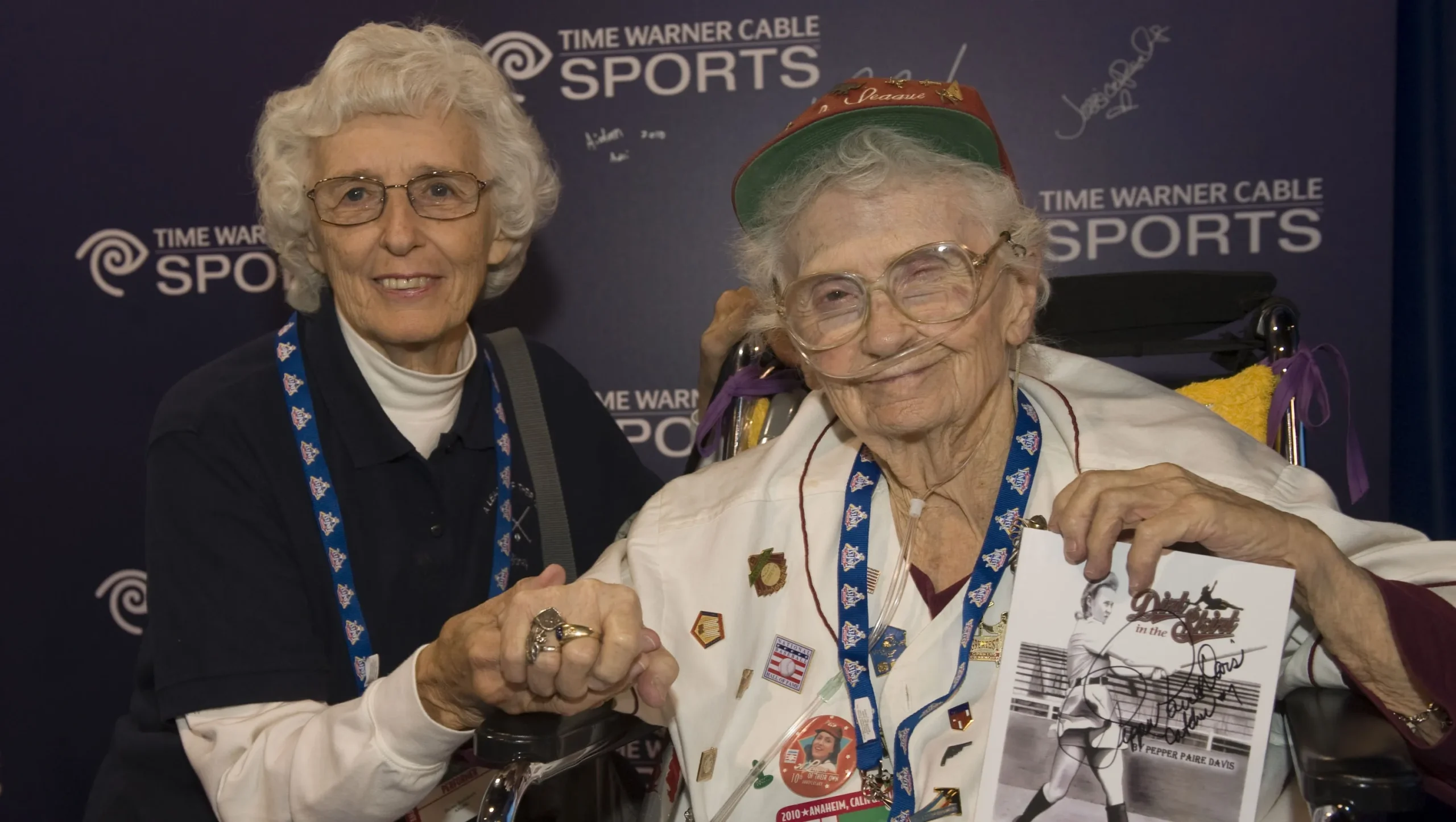
Lavonne “Pepper” Paire-Davis
One of the main consultants was Lavonne “Pepper” Paire-Davis, who played in the AAGPBL from 1944 to 1953.
“Pepper Davis came and lived with me in Indiana,” said Reiner. “The ladies came and groups of them would take buses and planes and fly to us and just visit for a couple of days and tell us stories and hang out.”
Paire-Davis stayed around the set and acted as a baseball consultant for Marshall and quickly became someone that many of the actors would talk with, as her insight was invaluable for creating an accurate portrayal of the era and league.
“We were not there to make a film,” said Reiner. “We were there to tell their story and make sure it was very funny and that people would like it.”
One of the 600-plus women who played in the AAGPBL who was thrilled that the film was made to shed light on a league that had not been discussed for decades was Maybelle Blair.
At 95 years old, Blair is in no rush to slow down. The charismatic former professional baseball player played one season for the AAGPBL and appeared in just one game during the 1948 season due to injury, but she recalls her time in the league as the greatest experience of her life.
From bus rides to learning to play poker, to making more money than her family had ever seen, Blair was simply living her dream.
“The best part of our lives was out there playing baseball. That’s all there was to it,” said Blair.
After her playing days were over, Blair has spent her time trying to raise awareness of the league and provide opportunities for the next generation of women to play, serving as one of the directors of the International Women’s Baseball Center.
Blair is working on trying to get a museum and activity center built in Rockford, Illinois, across the street from where the Rockford Peaches played. The activity center would house batting cages and playing areas, but also classrooms for women to learn to umpire and scout.
For Blair, she hopes that young girls will have more opportunities to choose whether they want to pursue baseball or softball, instead of being shoehorned into softball.
“Nowadays, they push softball towards girls. Naturally, because they get scholarships to go play softball, they don’t in baseball,” said Blair. “Girls should be able to have a choice if she wants to play softball or baseball. Either one is great sports but girls should be able to have a league of their own, which is what I’m hoping for.”

Justine Siegal Speaking at Baseball For All Event
No one knows more about trying to get girls opportunities to play baseball than Justine Siegal.
A baseball pioneer, Siegal is the first woman to coach a professional men’s baseball team when she worked for the Brockton Rox in 2009, then became the first woman to throw batting practice to an MLB team during spring training in 2011. In 2015, she joined the Oakland Athletics for their instructional league, becoming the first woman to coach for a Major League organization.
She started her non-profit, Baseball For All, in 2010, with the goal to build gender equity in baseball and empower girls to play, coach, and lead, ranging from girls as young as ten up through the college division.
“We do a handful of things but one of them is that we help communities start girls’ baseball teams and then create events for those girls to go to,” said Siegal. “The reason it’s important is that, unbelievably, girls are still being told that they should quit baseball and go play softball. We need to change that narrative.”
When Siegal was thirteen, a coach told her that she should quit playing baseball and that girls were only supposed to play softball.
Thus began Siegal’s journey and quest to change that notion for herself and future generations.
“When I was told I should quit it was definitely the beginning of the uphill battle,” said Siegal. “You have to take all of that pain and make it better for the next generation.”
Siegal is happy with the progress that’s being made for girls to have more opportunities to play baseball. She recounted that with the first event Baseball For All put on, they ended up with just three teams. That number has risen to fifteen teams with interest in the event next year.
“It shouldn’t be surprising in the idea that forty percent of Major League Baseball fans are women,” Siegal said. “So why wouldn’t they want to play too?”
Since the film’s release, Major League Baseball has finally started to see real change and progress when it comes to women securing jobs in the sport.
Kim Ng made history in 2020 when she was hired as the Miami Marlins’ general manager; the first woman in baseball to become a GM.
“I was so proud of Kim when she got that job,” Blair said. “I was at Dodger Stadium when she was assistant general manager. I told her one of these days, you’re going to do it. She said, ‘I don’t know. You know how it is with Major League Baseball. It’s hard to break.’ And I said, yeah, but you’re going to do it.”
Alyssa Nakken joined the San Francisco Giants’ coaching staff in 2020, becoming the first female to hold a coaching position on a big-league staff.
Rachel Balkovec became the first full-time female hitting coach in a Major League organization back in 2019, and once again made history in 2022 when the
New York Yankees named her manager of their Low-A affiliate, making her the first woman to ever serve as a manager of a minor league team.
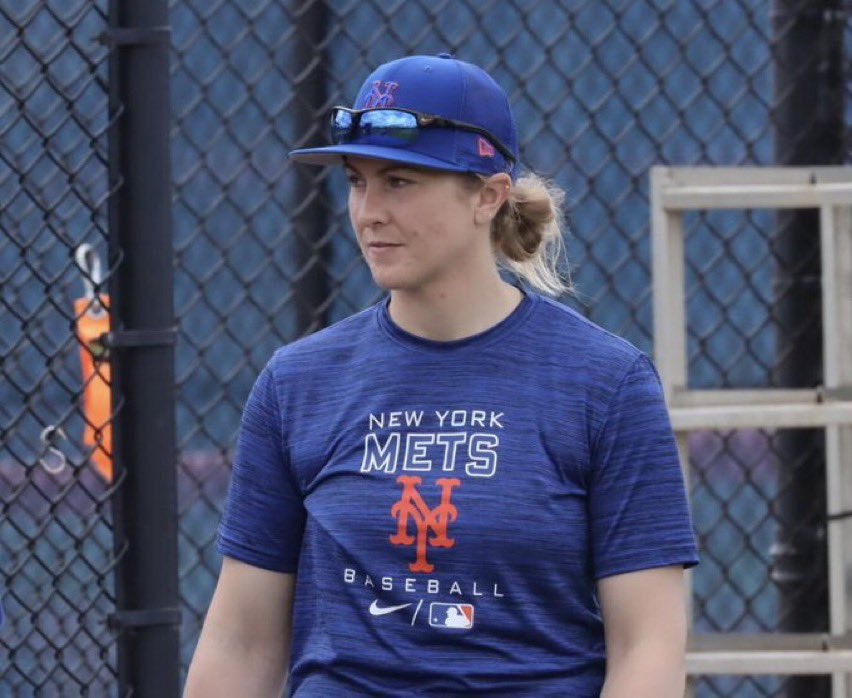
Gretchen Aucoin, Photo by Ed Delany of MMO
The New York Mets made a historic hire in 2022 by naming Elizabeth Benn their director of Major League operations; becoming the highest-ranking woman baseball ops employee in club history. The club also hired Gretchen Aucoin as a player development coach, making her the Mets’ first on-field female coach.
Kelsie Whitmore made history by becoming the first woman to join an MLB partner league when she signed with the Staten Island FerryHawks of the Atlantic League in 2022.
But an even earlier trailblazer was a left-handed pitcher by the name of Ila Borders.
Borders became the first woman to earn a college scholarship for men’s baseball at Southern California College, the first to start a collegiate men’s game and earn a win, and later became the first female to play in a professional men’s baseball league since the 1950s.
“I pretty much grew up playing baseball,” said Borders. “There’s a picture of me when I’m two years old and usually kids are dragging around their blanket. I’m dragging around that little red plastic baseball bat.”
On February 15, 1994, nearly two years after “A League of Their Own” debuted in theaters, Borders made history when she became the first woman to pitch in a men’s college baseball game, tossing a complete game on 104 pitches while allowing just five hits to earn her first win.
Borders recounted being an unpopular junior in high school because she played baseball, yet when “A League of Their Own” debuted, she felt that it might’ve given people more acceptance for girls playing baseball.
“I just thought it was really cool to actually see women playing baseball and sliding and doing stuff,” said Borders. “And so at least that came out and showed more women playing with women, I was playing with guys, but at least it showed women playing baseball.”
Borders impressed on the diamond during her time in college and with the independent leagues that she almost attended spring training with the Cincinnati Reds in 2000, before they rescinded due to the overwhelming media attention. Her father was in touch with several people from the Reds’ front office, including owner Marge Schott.
“At that particular time, they didn’t want the media,” said Borders. “They said it was going to take away from the game of baseball and that they couldn’t do it right now because they were afraid of it being too crazy.”
While Borders didn’t make the majors, she left her indelible mark on the game and has since become a firefighter paramedic and captain in Oregon, while continuing to coach baseball for both boys and girls on the side.
When asked about the progress women have made in baseball since she retired from playing, Borders is delighted with the efforts Major League Baseball and USA Baseball have made with getting more women involved, and specifically mentioned Rachel Balkovec getting the opportunity to manage in the minors.
“I think the minds have changed and I think they (MLB) see value in getting more people to love the game and to be involved,” said Borders. “I think some people think a guy is not going to listen to a woman. But if you know what you’re talking about and you’re going to help them get better that’s all they really care about. If you can help the team and develop somebody to become a better player, that’s absolutely all that I care about. I think there’s a misconception that they (male players) wouldn’t listen and it’s like, no, that’s really not the case.”
With more and more women finally getting the opportunity to work in various on-field and executive roles in Major League and Minor League Baseball, it’s fair to wonder how much of an effect “A League of Their Own” played in inspiring young girls and women to continue their push to work in the sport.
“This film had a huge impact,” said Cavanagh. “I know that because of the people that come up and talk to me. All the women who come up and say we watched ‘League’ on our bus on our way to our championships. I think every single team on their way to their championships watched ‘A League of Their Own’ because I can’t tell you how many people have said this to me.”
“I think it was very validating for women,” said Cusack. “I think it really helped to kick in the desire and passion that young girls and women have for playing baseball and that they deserve as much amount of time and training as any guy.”
“I think it gave women more of an understanding that you could play baseball,” said Pelton. “The fact that these women back then never even told their families about, never discussed it because even if they did, they’d go, what are you talking about? It gave them a voice.”
“I was doing an earlier interview and was talking about the number of sports stars in different sports that have said that “A League of Their Own” was their inspiration to take up sports,” said Davis. “That’s pretty phenomenal. Abby Wambach told me she took up soccer because of that movie.”
Davis was hopeful that the success of “A League of Their Own,” which is still the highest-grossing baseball film of all time, along with “Thelma and Louise” would help to increase the number of films in which there was better female representation, something the press was predicting would happen. Unfortunately, those films were far and few between, and in 2004, Davis decided to do something about it.
“When my daughter was a toddler, I started showing her little kids’ stuff like pre-school shows,” said Davis. “And because I had been in those two movies (“A League of Their Own” and “Thelma and Louise”) and had a lot of feelings of how females are portrayed, I immediately noticed that there were far fewer female characters than male characters. And it’s made for little kids which I was appalled. How can this be true in the 21st century?”
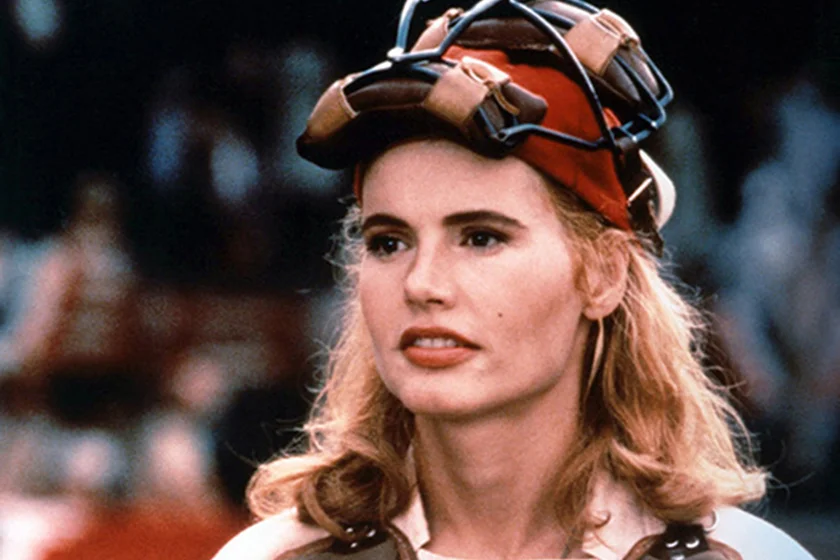
Photo via Columbia Pictures
Davis founded the Geena Davis Institute on Gender in Media, a global research-based organization that collaborates with the entertainment industry to create gender balance and reduce the amount of unconscious bias that’s seen in various forms of entertainment.
The Institute uses data and presents it to the industry to reveal the lack of female representation and discrepancies in how females are characterized in various media forms.
“What I was able to point out to them with the data was that the worlds of these shows and movies are nearly bereft of female presence and how that needed to change,” said Davis. “They were stunned, they were so stunned to find this out! It turns out that the creators who make kids media care about kids, so they immediately wanted to make changes. We were able to find that in both TV made for kids and family-rated films, we have now reached parity in the lead characters male and female.”
According to the Institute’s website, they accomplished two of their primary goals in 2019 and 2020 by achieving gender parity for female lead characters in the top 100 largest grossing family films and the top Nielsen-rated children’s television programming.
Davis’ work led to her being awarded her second Oscar when she was presented with the Jean Hersholt Humanitarian Award in 2019, which is given to an “individual in the motion picture industry whose humanitarian efforts have brought credit to the industry,” according to the Oscars’ website.
Investigating the role “A League of Their Own” played in aiding the future generations of women to pursue their passions in baseball and other sports was a critical question I wanted to delve into.
But while I had the ears of several of the actors from the film on the phone, I needed to ask their opinion on a burning question I’ve had since first viewing the film as a kid: Did Dottie drop the ball on purpose in the home-plate collision with her sister Kit?
“Whatever you believe you make true,” said Reiner. “If you want to believe that she (Dottie) came all the way back just because the heart makes you good, there’s that group. Then there’s the other group that said, no, she found her self-esteem and wanted to show her husband. It’s one of those things where if you use your heart and have a good family, she came and helped her sister.”
“They shot it in such a way that it really could go either way,” said Cusack. “I even asked the writers that myself. And they wanted to keep it ambiguous. You’re asking the question we all were asking! I think it’s one of those things that the screenwriters wanted the audience to decide.”
“I’m torn on that,” said Pelton. “It’s whether the love of baseball – with a player that was truly a ball player – dropped the ball, or would she do it for the love of her sister? I don’t know. It’s tough because I can see both points of view. I would also say that you have to look at the aftermath of the shot too because Geena is standing there with a smile on her face watching her sister. It leads me to believe that she may have [dropped it on purpose], but I don’t know.”
“Dottie would never drop the ball on purpose,” said Cavanagh. “I feel like that would be throwing the game. She wouldn’t throw a game; she was a ballplayer! I think she was happy for Kit that she got her moment. I can’t imagine a ballplayer, and I’ve played a lot of sports, doing that. I think it would be a disservice to all the women of the AAGPBL if her dropping the ball was her intentionally doing that. These women played for fucking real.”
“I had a heart attack (ten years ago) and I waited three days to go to the doctor,” said O’Donnell. “When I got there, it was really near the end. I was very lucky, and they rushed me into emergency surgery, put a stent in, and as I’m rushed in and they were shaving everywhere. There were a bunch of thirty-year-old nurses all around me and they said to me, ‘Rosie, do you think that Dottie dropped that ball on purpose?’ I started cracking up. I’m thinking, here I am on my death bed and you’re asking me if I think Dottie dropped the ball? [Laughs.] The answer is yes, I did. I think she dropped it on purpose.”
Davis has been asked that question for decades and has rightfully decided to keep her thoughts to herself. However, I did ask her if she does in fact have the answer.
“Yes,” said Davis. “People ask me all the time and I’m like, are you kidding? I’m never going to tell what I think happened. It’s fun for people to talk about.”
After thirty years, “A League of Their Own” continues to hold up by showcasing women in a strong and impactful way that very few films have done. No one could have foreseen that a film that was looking to shed light on a bygone era where women played baseball professionally for a dozen years would give young girls the inspiration to pursue their goals in baseball, which has been a male-dominated industry since its inception.
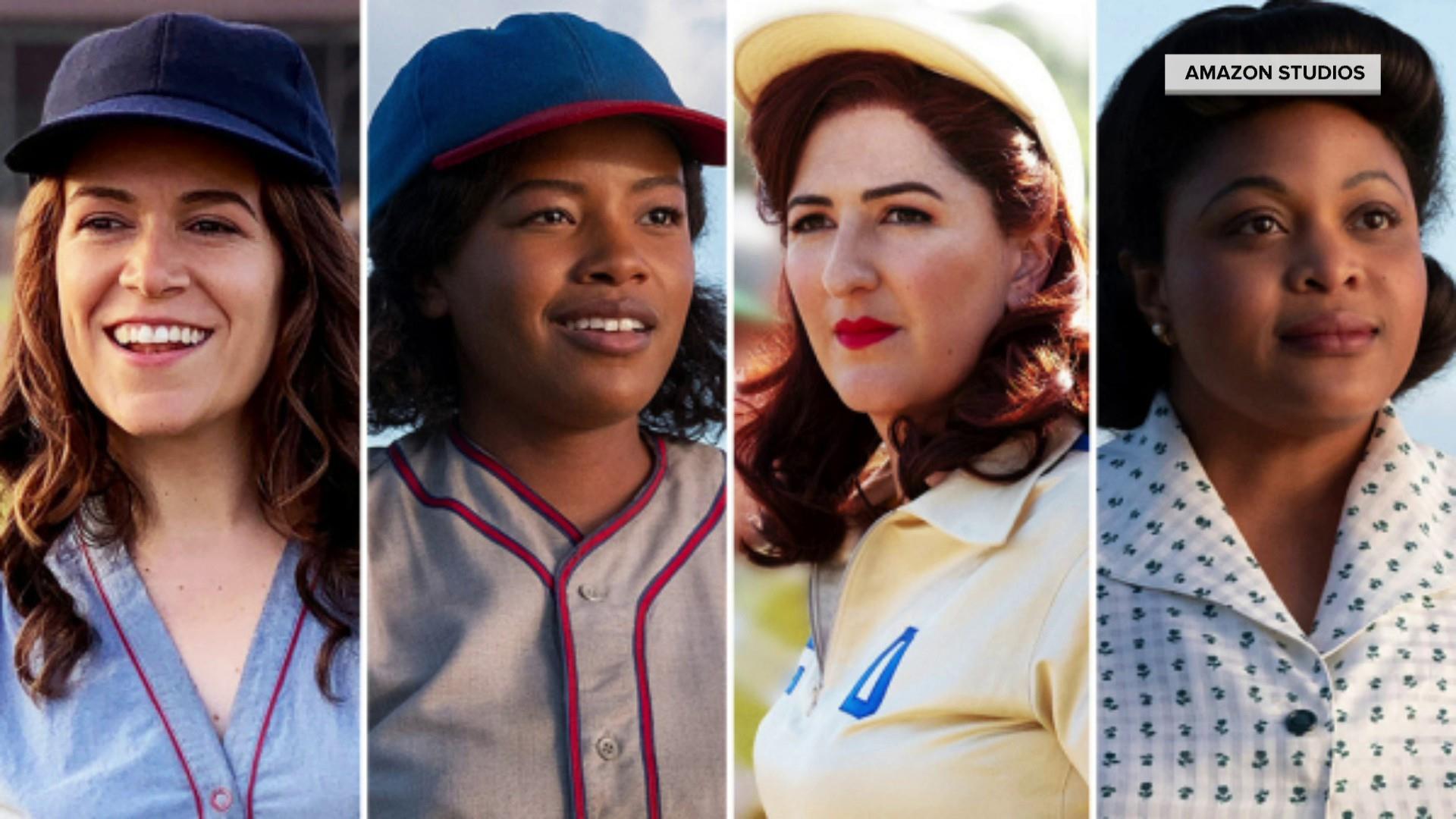
This August, “A League of Their Own” is getting a modern reboot with a new Amazon series created by Abbi Jacobson and Will Graham, which is expected to cover race and sexuality more than the film did thirty years ago.
Siegal worked as the baseball coordinator for the show, and said that the crew was intentional in honoring Marshall’s film and expanding on the story.
“In honoring the movie, we wanted to take the story further and really look at what life was like for women who wanted to play baseball in 1943,” Siegal said. “It’s a very interesting story and I think people will love it.”
O’Donnell is guest-starring in the series as an owner of a gay bar that players used to go to during that era.
While the film did not address homosexuality, O’Donnell remembers a specific scene when the team is traveling on the bus and her character talks to Reiner and Petty about her boyfriend that doesn’t treat her right. Doris revealed to the women that she no longer felt like an outsider anymore after joining the league, and for O’Donnell, that was her character coming out.
“I thought my character was one hundred percent gay,” O’Donnell said. “I was in love with the Mae (Madonna) character.”
O’Donnell remembers meeting many of the real-life women who played in the AAGPBL during her time shooting the film, and said that many of them were gay. The Amazon reboot is expected to explore more of the women’s lifestyles and address the racial inequality that existed, as the AAGPBL was not integrated.
For films to not only have such staying power but to elicit deep reverence and inspire others to believe in themselves and strive for their dreams is rare in Hollywood. Yet, “A League of Their Own” continues to do just that.
“It’s a beautiful film,” said O’Donnell. “It’s well-written and well-acted and there were heartbeats in there that you felt. And it was real.”
“So many women that played didn’t ever really talk about it with their families,” said Cavanagh. “They had families and moved on. They had reunions and would get together. And then the movie happened and that really opened the door to the world knowing about this league. And it’s such a fascinating story of the real stories of these women who were sixteen and seventeen when they were plucked off a farm and brought to the big city. And back in the forties, some had never left their towns! The movie set up the platform to talk about the league.”
“It’s about the game, it’s about people who love the game,” said Cusack. “It’s an interesting story that most people didn’t know about. It’s also a story about women playing the game and finding their own voice within the sport and being taken seriously.”
“It hits the same themes that are timeless,” said Pelton. “The theme of being part of something bigger than you, the nostalgia of youth, the nostalgia of doing something big in your life that is always a part of your life.”
“Obviously, we hoped people would like it and see it,” said Davis. “We had an idea that it was going well and was going to be a good movie. But it was a shock that it really struck a nerve with people and that impact that it’s had since then.”
The impact and importance of “A League of Their Own” make it much more than just entertainment, rather, it evokes real emotion and highlights that our dreams are within reach, no matter how difficult it might be to get there.
As Jimmy Dugan tells Dottie Hinson in the film, “It’s supposed to be hard. If it wasn’t hard, everyone would do it. The hard… is what makes it great.”
Truer words have never been spoken.


